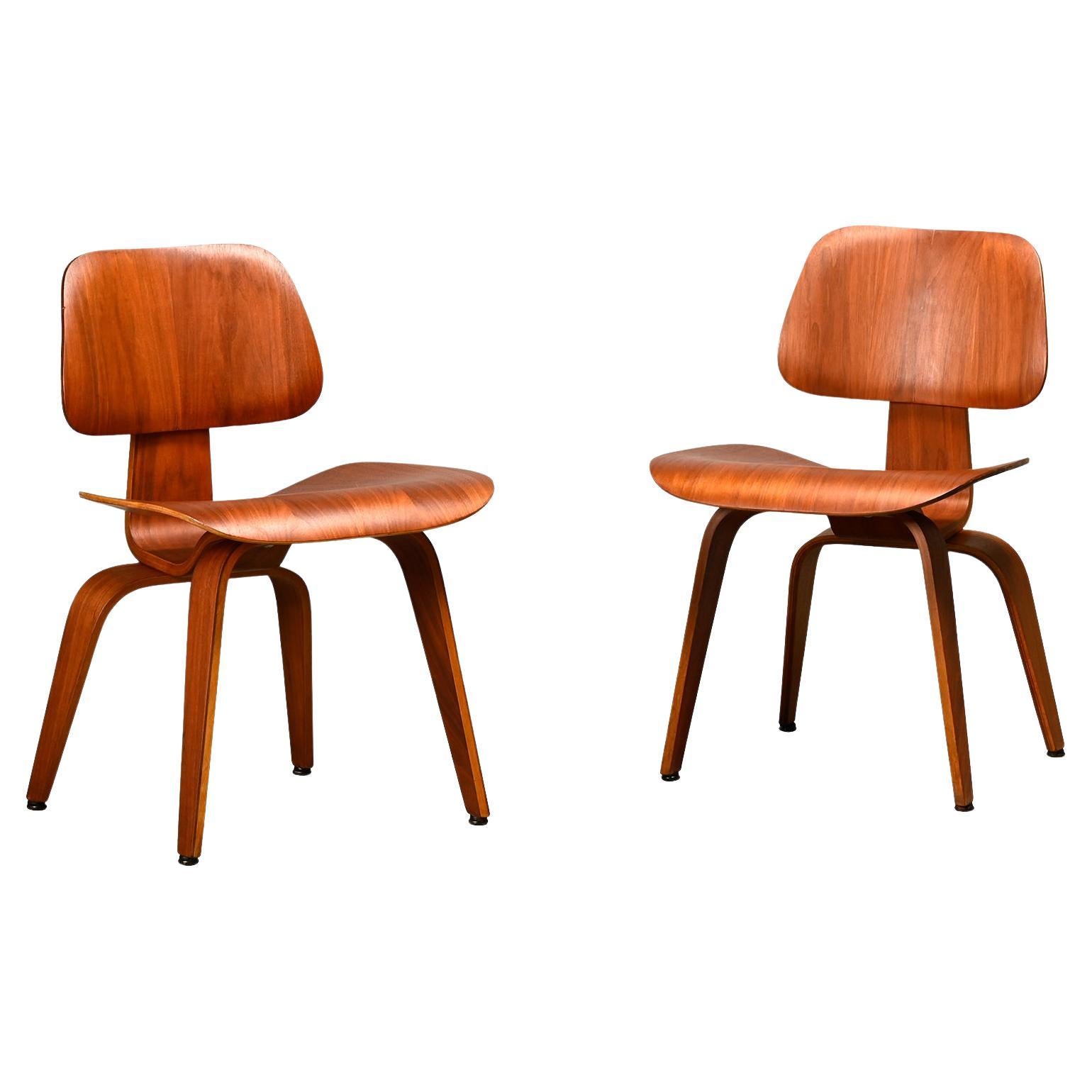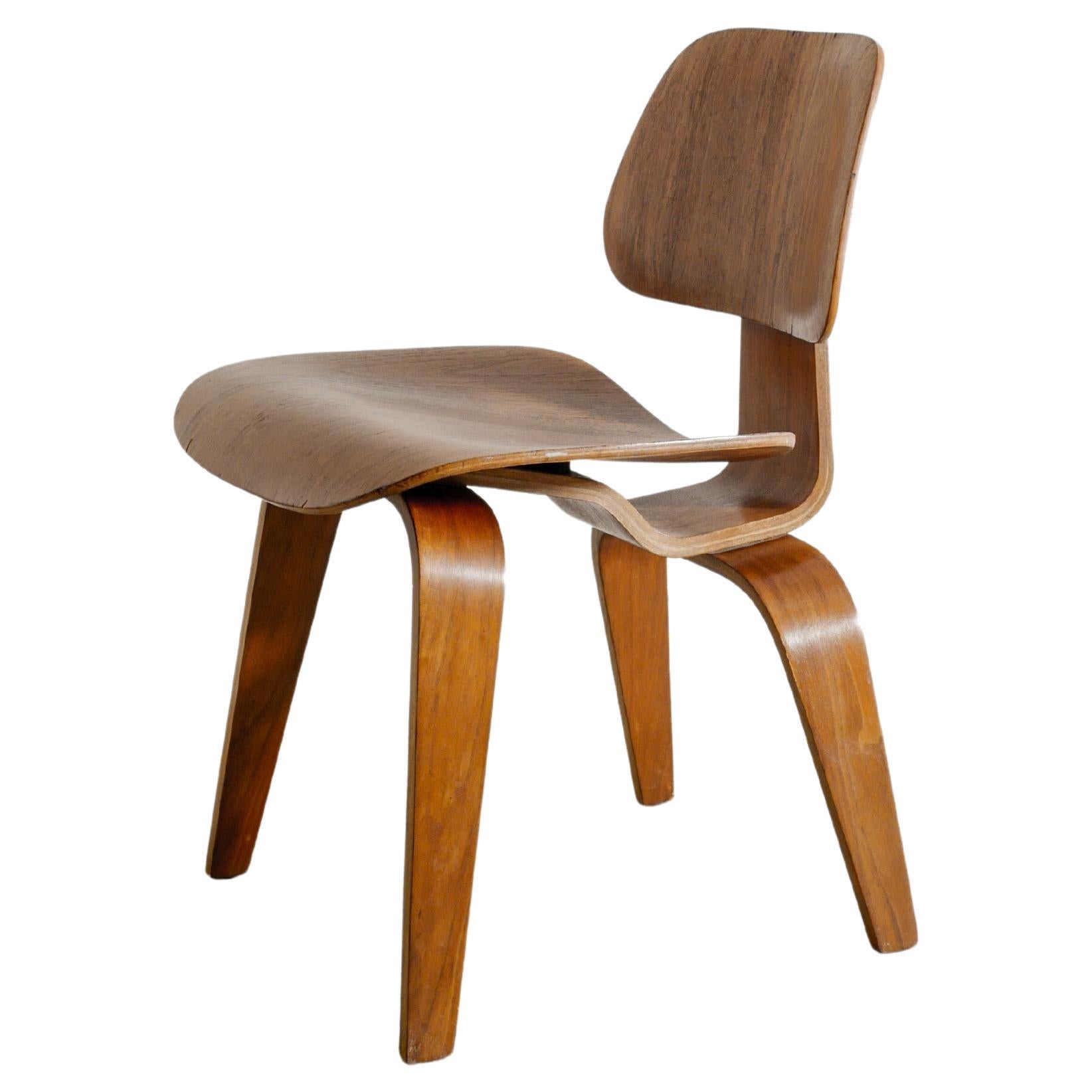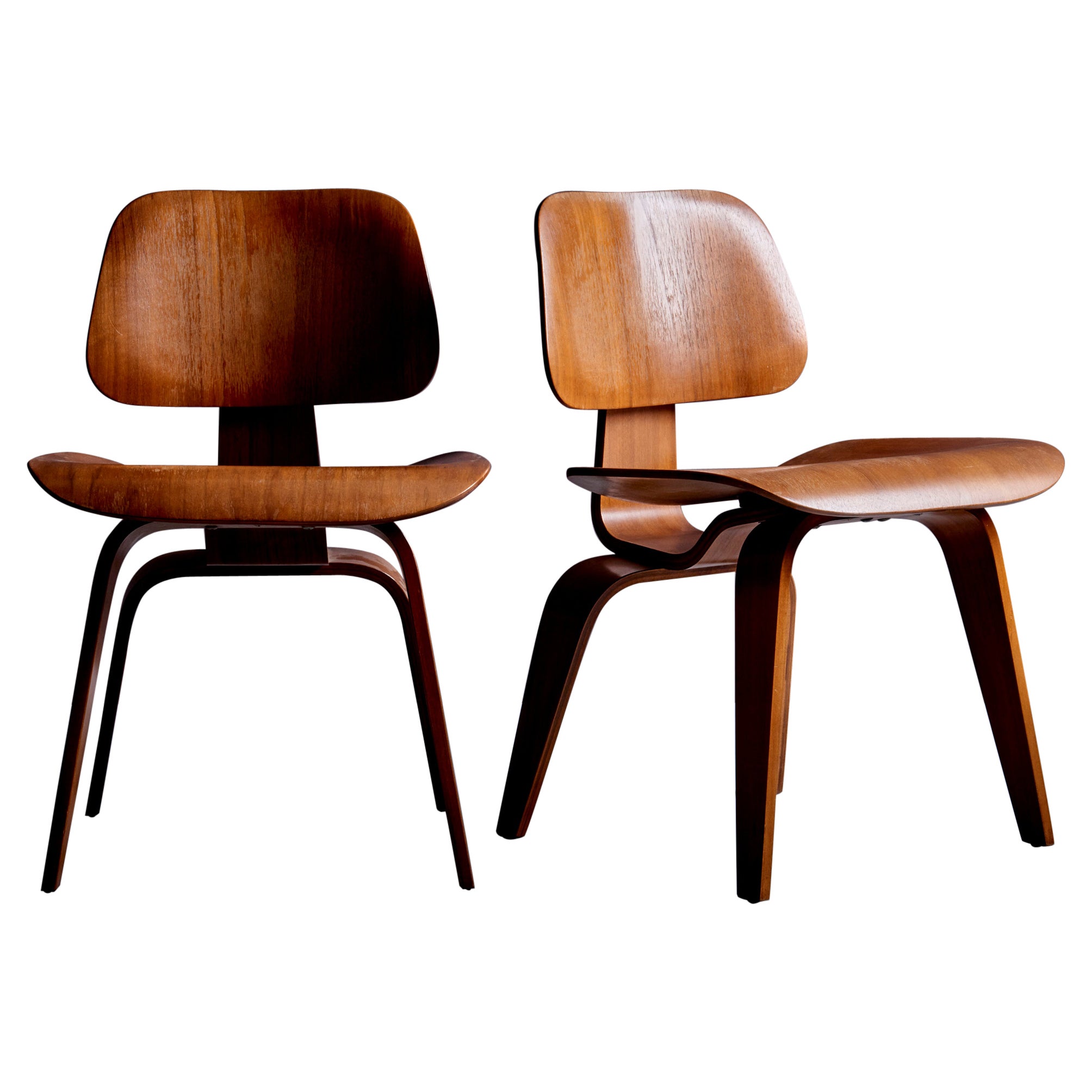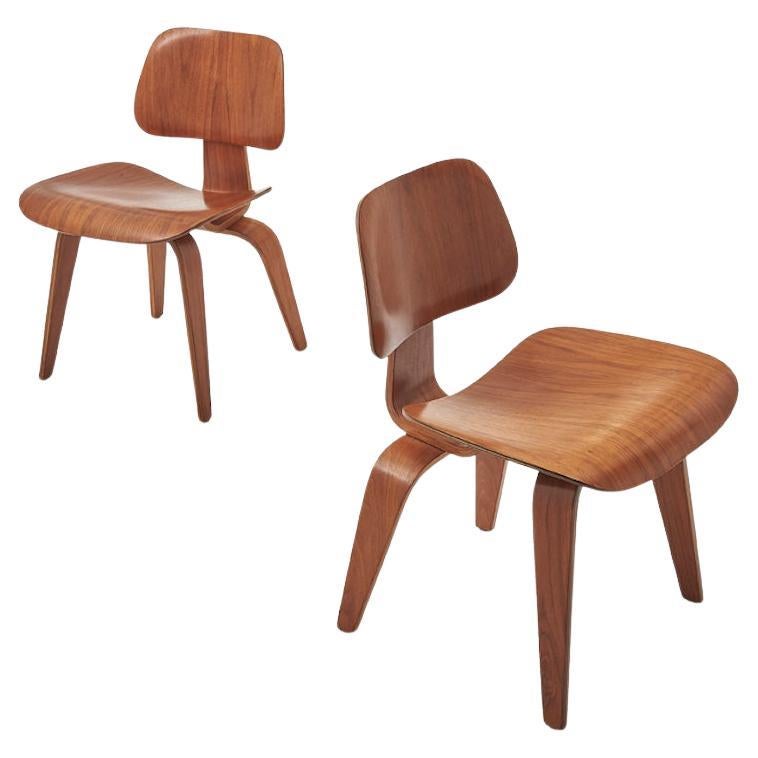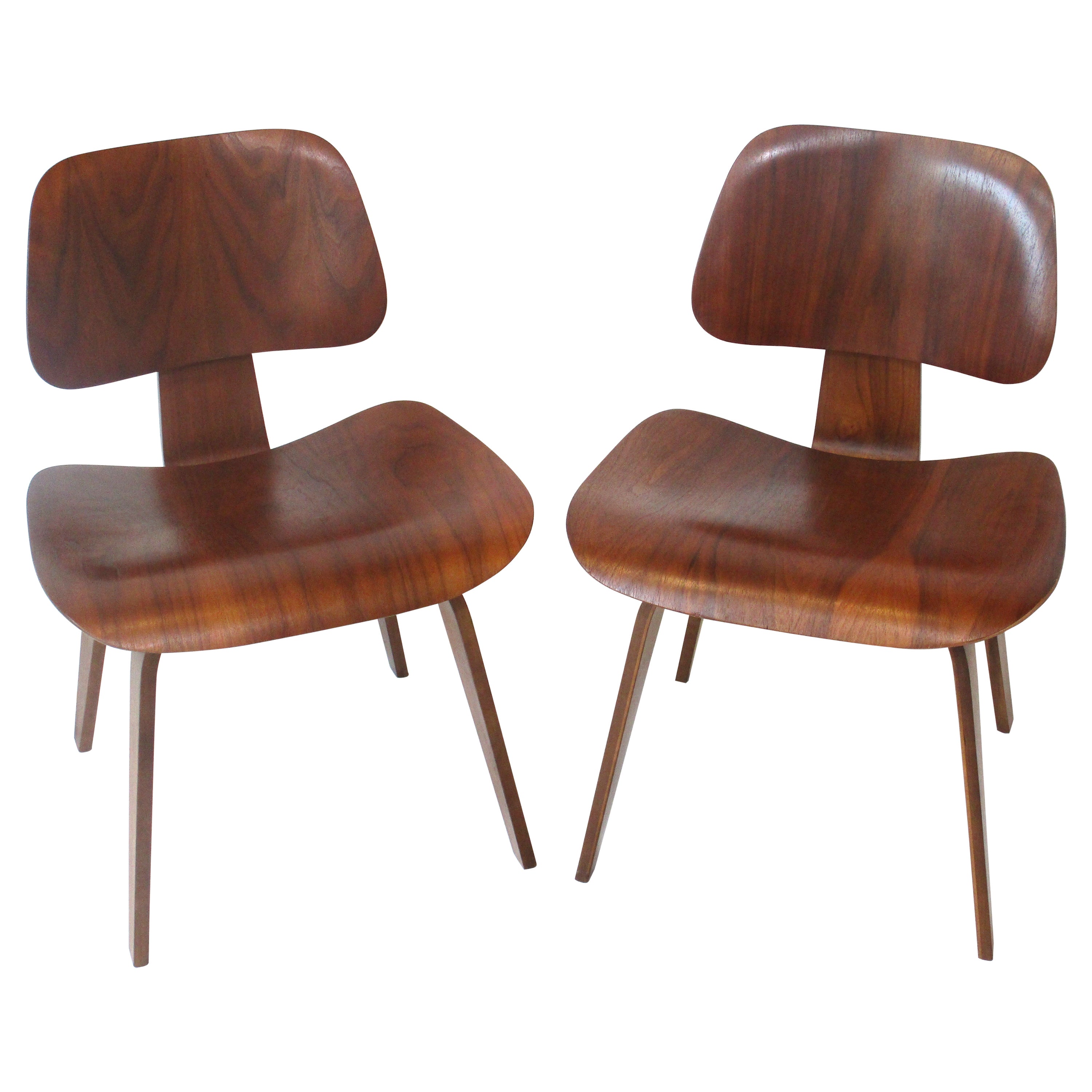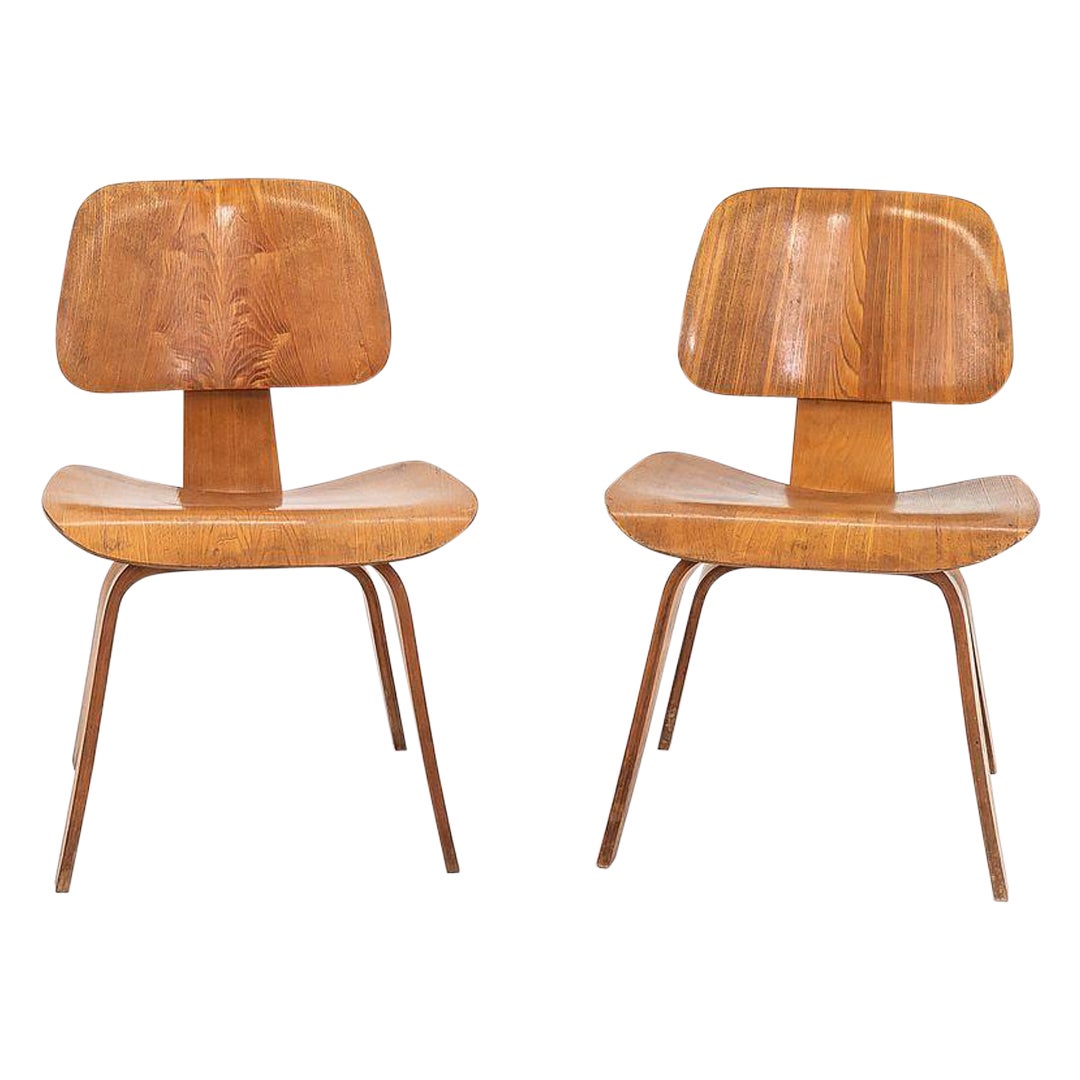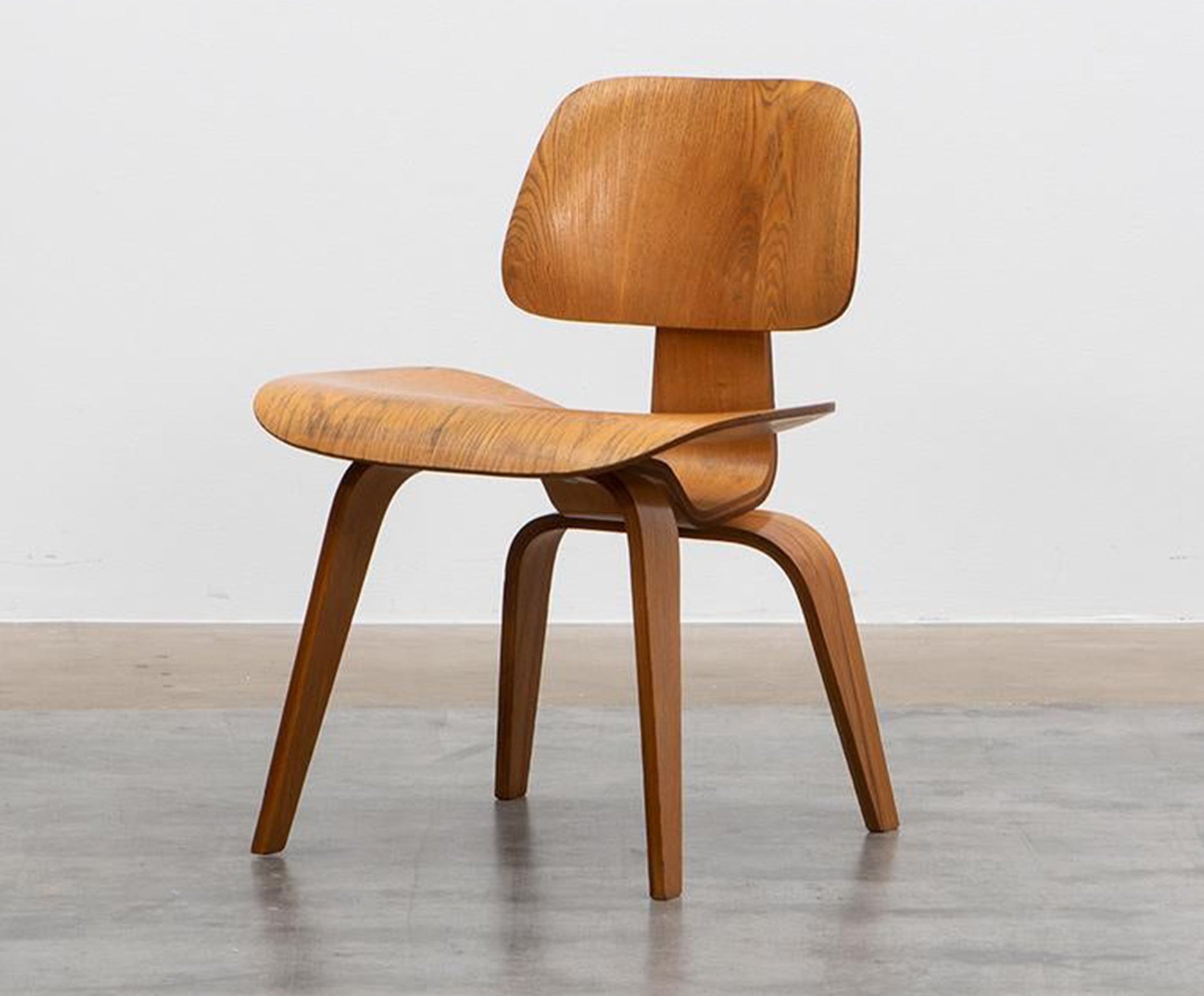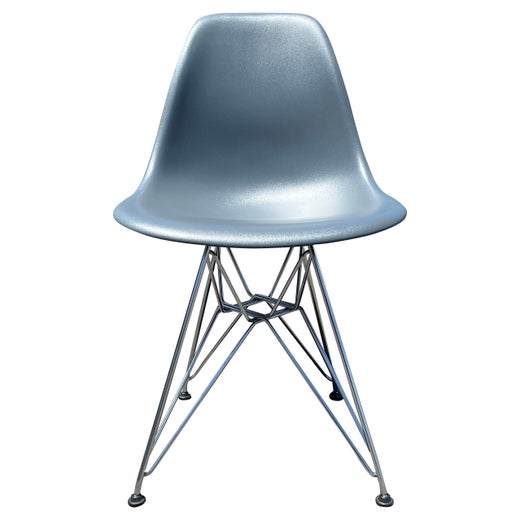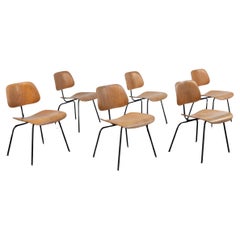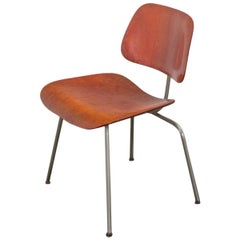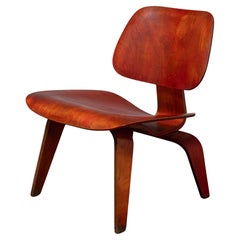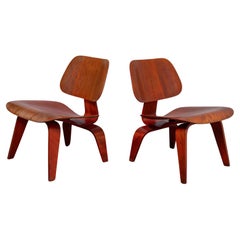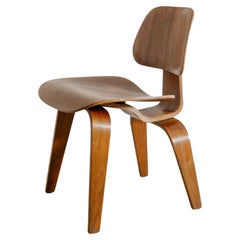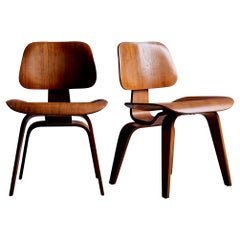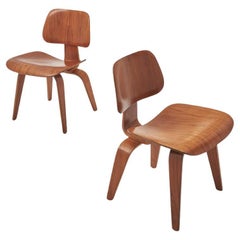Pair of Early Walnut Eames DCWs Dining Chair Wood for Herman Miller
About the Item
- Creator:Charles and Ray Eames (Designer),Herman Miller (Manufacturer)
- Design:
- Dimensions:Height: 29 in (73.66 cm)Width: 19.25 in (48.9 cm)Depth: 21 in (53.34 cm)Seat Height: 17 in (43.18 cm)
- Sold As:Set of 2
- Style:Mid-Century Modern (Of the Period)
- Materials and Techniques:
- Period:
- Date of Manufacture:1950s
- Condition:Refinished.
- Seller Location:Brooklyn, NY
- Reference Number:Seller: OAM00311stDibs: LU954114273041
Eames DCW Chair
Although their ubiquitous leather lounge might be more recognizable, there’s arguably no chair that better embodies the design ethos of Charles and Ray Eames (1907–78; 1912–88) than the DCW dining chair. It was introduced at New York City’s Museum of Modern Art in a 1946 exhibition titled “New Furniture Designed by Charles Eames.” (Ray was notably absent from the exhibition title, despite being a full collaborator on the work.)
In its design, construction and manufacturing, the DCW is pure Eames. It was born of functionality and comfort, crafted in a shape that the ever-inquisitive Eameses decided would provide optimal support for a large number of people. “We found that comfort depended more on the perfect molding to the body shape than it did on the way the bone structure was supported,” Charles noted in a 1954 film on the piece. “If the structure was supported properly, the hard and rigid material, like molded plywood, can provide a remarkably high degree of comfort.”
This proper support is the result of the chair’s five distinct parts: a pair of two-legged bases, a bentwood seat, a bentwood back and a long piece of bentwood that connects each of these. Such construction allows for a certain flexibility in movement between the seat and the back without requiring any type of complicated adjustment mechanism.
The Eameses developed the DCW while tinkering with the “Kazam! Machine,” a mechanism they invented to press and mold wood veneer. In their Los Angeles apartment, the couple would place a sheet of wood veneer into the machine, then top it with a layer of glue. After repeating these steps 5 to 11 times and ensuring the layers were set in place, the Kazam! Machine was clamped shut and a bicycle pump inflated a balloon to press the layers into their molded shape. Charles and Ray then cut the mold and sanded each finished shape by hand.
The Kazam! Machine was a direct result of Charles and Ray’s determination to conceive an efficient, inexpensive means of production. Plywood, too, was a significant choice. Not unlike the molded plastic with which the Eameses would experiment, plywood was relatively cheap and easily available, rendering it optimal for the kind of democratic design the couple championed.
The Eames DCW chair has appeared (and continues to appear) in interiors by top designers all over the world. Today, it remains a top seller for Herman Miller — with equal credit given to Charles and Ray.
Charles and Ray Eames
Charles Eames and Ray Eames were the embodiment of the inventiveness, energy and optimism at the heart of mid-century modern American design, and have been recognized as the most influential designers of the 20th century. The Eameses were lovers of folk craft who had a genius for making highly original chairs, tables, case pieces and other furniture using traditional materials and forms.
As furniture designers, filmmakers, artists, textile and graphic designers and even toy and puzzle makers, the Eameses were a visionary and effective force for the notion that design should be an agent of positive change. They are the happy, ever-curious, ever-adventurous faces of modernism.
Charles Eames (1907–78) studied architecture and industrial design. Ray Eames (née Beatrice Alexandra Kaiser, 1912–88) was an artist, who studied under the Abstract Expressionist painter Hans Hofmann. They met in 1940 at the Cranbrook Academy of Art in suburban Detroit (the legendary institution where Charles also met his frequent collaborator Eero Saarinen and the artist and designer Harry Bertoia) and married the next year.
His technical skills and her artistic flair were wonderfully complementary. They moved to Los Angeles in 1941, where Charles worked on set design for MGM. In the evenings at their apartment, they experimented with molded plywood using a handmade heat-and-pressurization device they called the “Kazam!” machine. The next year, they won a contract from the U.S. Navy for lightweight plywood leg splints for wounded servicemen — vintage Eames splints are coveted collectibles today; more so those that Ray used to make sculptures.
The Navy contract allowed Charles to open a professional studio, and the attention-grabbing plywood furniture the firm produced prompted George Nelson, the director of design of the furniture-maker Herman Miller Inc., to enlist Charles and (by association, if not by contract) Ray in 1946. Some of the first Eames items to emerge from Herman Miller are now classics: the Eames chair, the LCW, or Lounge Chair Wood, and the DCM, or Dining Chair Metal, supported by tubular steel.
The Eameses eagerly embraced new technology and materials, and one of their peculiar talents was to imbue their supremely modern design with references to folk traditions.
Their Wire chair group of the 1950s, for example, was inspired by basket weaving techniques. The populist notion of “good design for all” drove their molded fiberglass chair series that same decade, and also produced the organic-form, ever-delightful La Chaise. In 1956 the Eames lounge chair and ottoman appeared — the supremely comfortable plywood-base-and-leather-upholstery creation that will likely live in homes as long as there are people with good taste and sense.
Charles Eames once said, “The role of the designer is that of a very good, thoughtful host anticipating the needs of his guests.” For very good collectors and thoughtful interior designers, a piece of design by the Eameses, the closer produced to original conception the better, is almost de rigueur — for its beauty and comfort, and not least as a tribute to the creative legacy and enduring influence of Charles and Ray Eames.
The original Eames furniture for sale on 1stDibs includes chairs, tables, case pieces and other items.
- ShippingRetrieving quote...Shipping from: Brooklyn, NY
- Return Policy
More From This Seller
View AllVintage 1950s American Mid-Century Modern Dining Room Chairs
Metal
Mid-20th Century American Dining Room Chairs
Plywood
Vintage 1950s American Mid-Century Modern Lounge Chairs
Plywood
Vintage 1940s American Mid-Century Modern Lounge Chairs
Plywood
Vintage 1960s American Mid-Century Modern Dining Room Chairs
Fiberglass
Mid-20th Century American Mid-Century Modern Dining Room Chairs
Plywood
You May Also Like
Vintage 1940s American Mid-Century Modern Dining Room Chairs
Rubber, Walnut, Plywood
Vintage 1950s American Mid-Century Modern Armchairs
Walnut
Vintage 1950s American Mid-Century Modern Dining Room Chairs
Walnut
Mid-20th Century Danish Mid-Century Modern Chairs
Plywood
Mid-20th Century North American Mid-Century Modern Chairs
Walnut
Vintage 1940s American Modern Lounge Chairs
Steel
Read More
A Guide to Herman Miller’s Most Iconic Furniture
The prolific manufacturer has partnered with many of the world’s top designers since opening its doors in 1923. Here are some of the company’s greatest hits, which helped transform the American home and office.
The 21 Most Popular Mid-Century Modern Chairs
You know the designs, now get the stories about how they came to be.
